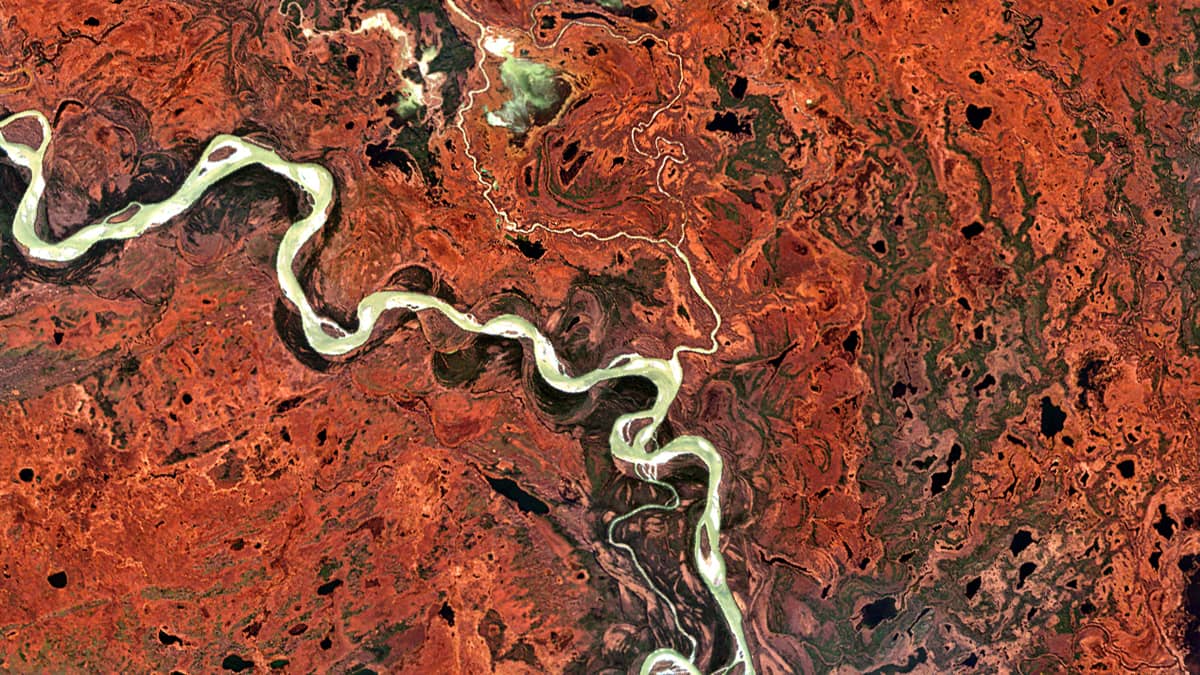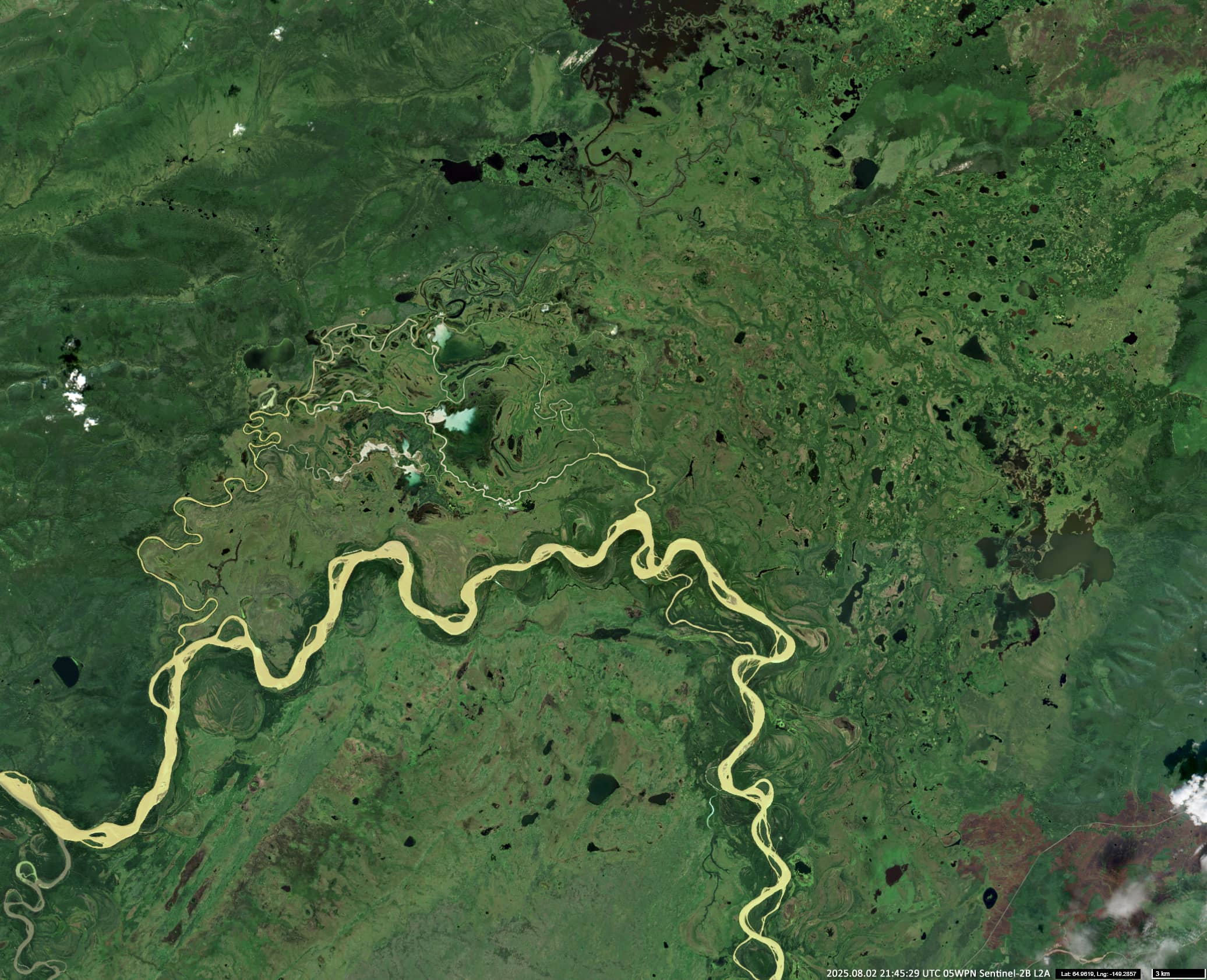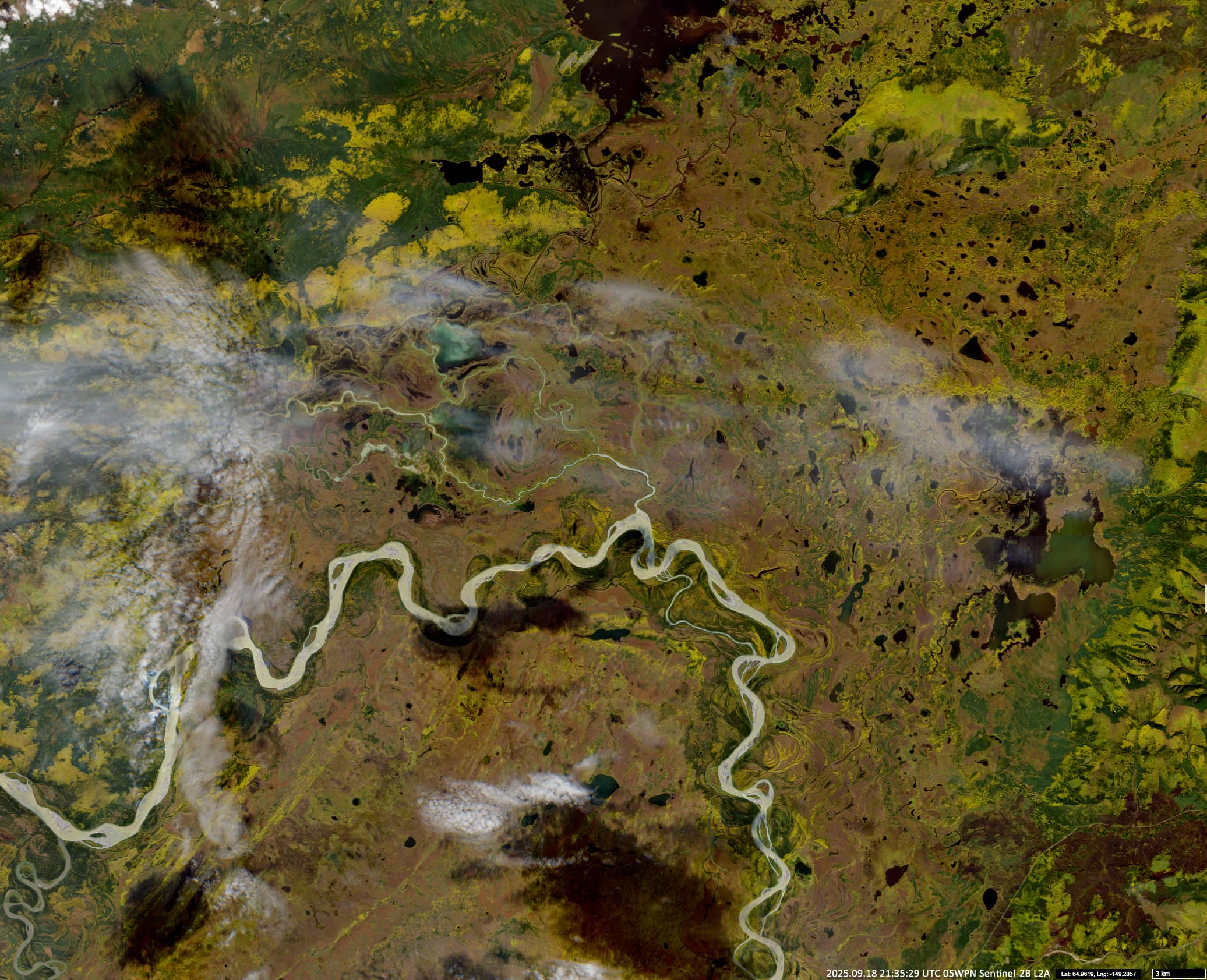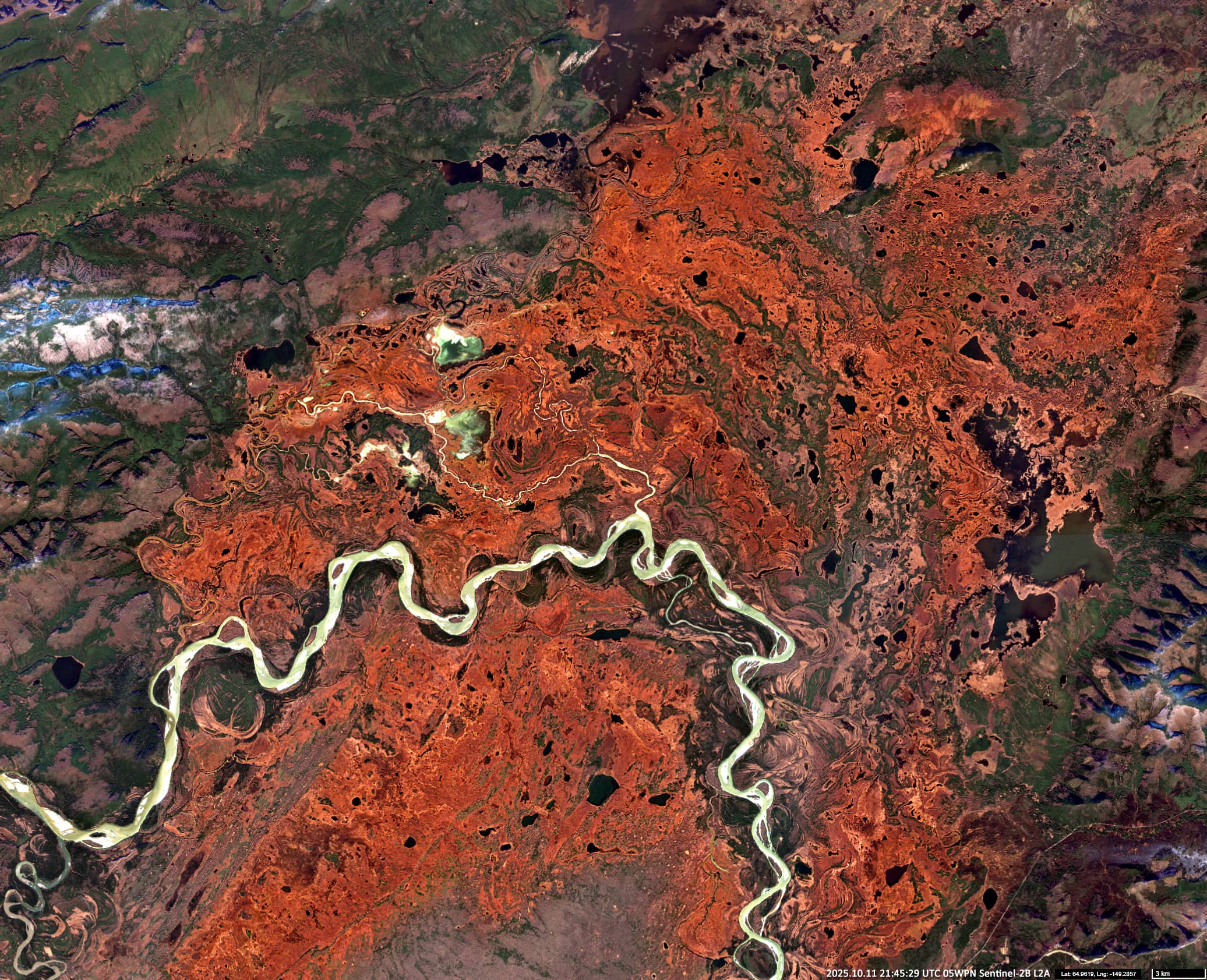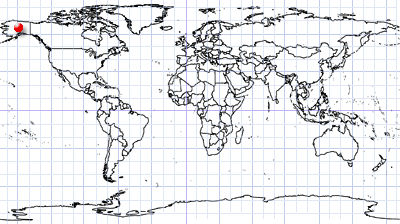
Autumn forest colours
Central Alaska | USA
Dates of acquisition:
• 2025.08.02 | 21:45:29 UTC
• 2025.09.18 | 21:35:29 UTC
• 2025.10.11 | 21:45:29 UTC
Sensor: Sentinel-2B L2A
Coordinates: ca. 65°N, 149°W
In autumn, when the days become shorter and ambient temperatures drop, many trees undergo a distinctive colour transformation. This phenomenon is particularly pronounced in the northern regions of North America and Asia, which are characterised by extensive coniferous and deciduous forests. Despite the frequent cloud cover in these areas at this time of year, the progression of autumnal coloration can reliably be detected and observed using remote sensing techniques.
The primary physiological driver of this process is the breakdown of chlorophyll, which is responsible for the green colour of leaves. Once the production of chlorophyll ceases and existing molecules decompose, the underlying yellow and orange carotenoids, which are already present in the leaf tissues – become visible, giving the leaves their characteristic colours.
The red colouring, including shades of scarlet, pink, and purple, is caused by the synthesis of anthocyanins, pigments whose formation is stimulated by residual sugars in the leaves and by cool nighttime temperatures. These pigments convert absorbed light energy into heat, protect the photosynthetic apparatus from excessive light exposure, and facilitate nitrogen resorption before leaf ageing. The specific colour tone of a particular species depends on the pH of its cellular environment.
In contrast, the brown colouration is not caused by pigment synthesis, but by the visibility of cell wall components once the primary pigments have been broken down.
Three Sentinel-2 images of an area along both banks of the Tanana River, about 100 km east-northeast of Fairbanks in Alaska, are shown. The first image, acquired in early August, shows a uniformly green forest. The second one, taken in mid-September, shows the first appearance of yellow foliage in certain species – possibly including deciduous and larch trees. The third image, taken in mid-October, shows widespread red colouration in deciduous species such as maple, aspen, northern red oak, rowans and some shrubs.


